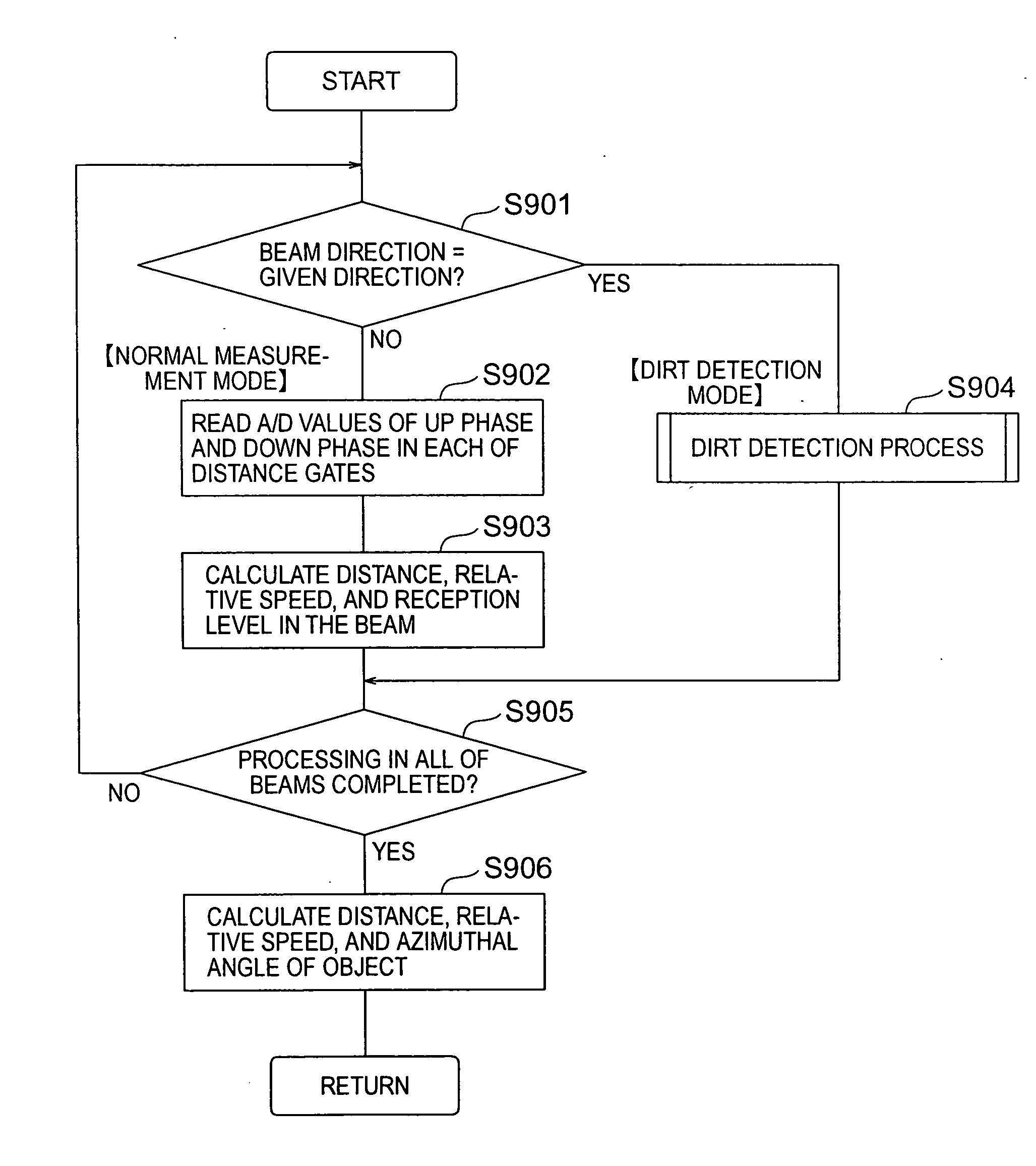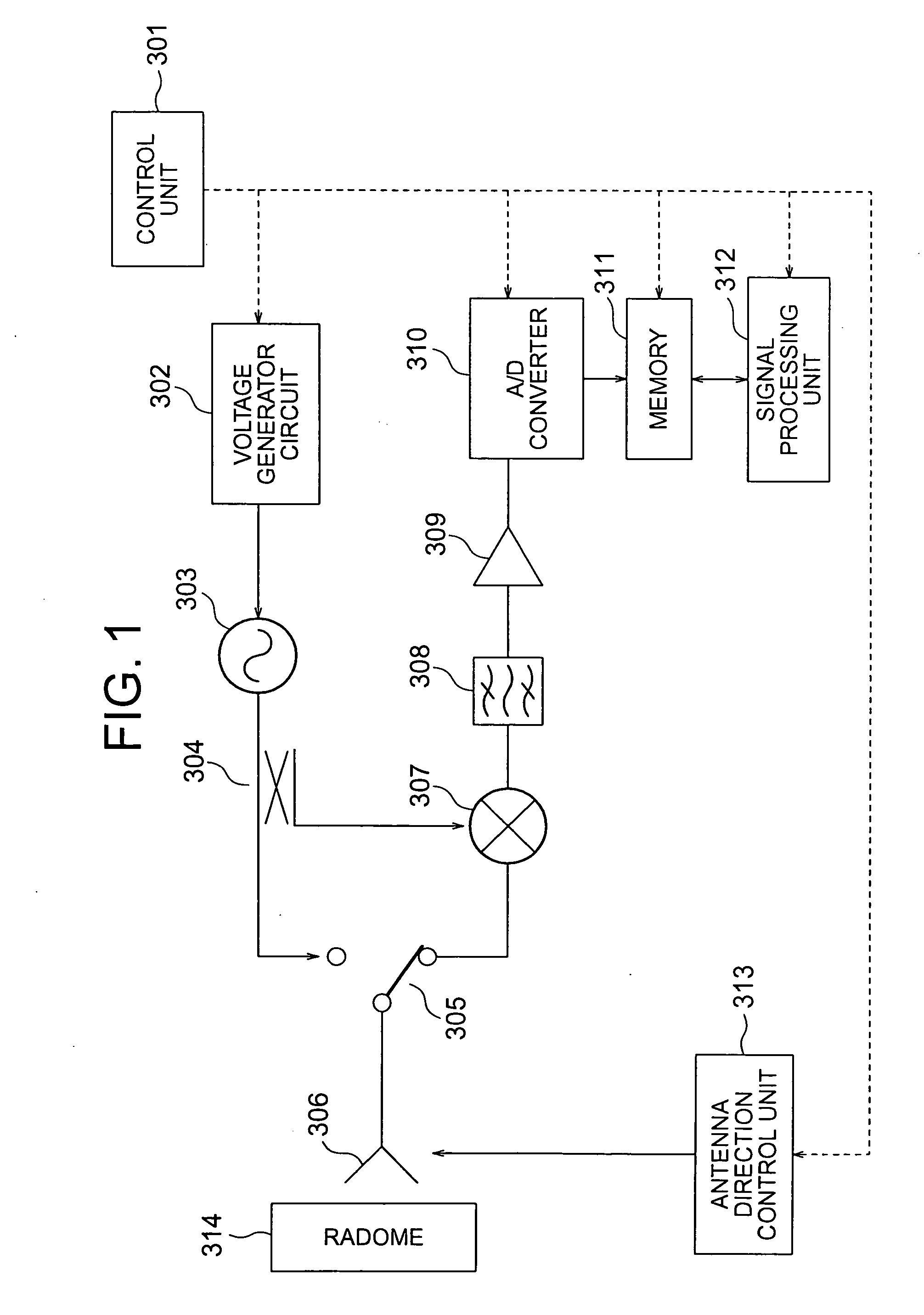Radar device
a technology of radar and detector, applied in the direction of measurement devices, instruments, using reradiation, etc., can solve the problem that the dirty detection process cannot be executed, and achieve the effect of reliably and quickly
- Summary
- Abstract
- Description
- Claims
- Application Information
AI Technical Summary
Benefits of technology
Problems solved by technology
Method used
Image
Examples
first embodiment
[0030]FIG. 1 is a structural diagram showing a structure of an in-vehicle radar device in accordance with a first embodiment of the present invention. As shown in FIG. 1, the in-vehicle radar device according to the first embodiment is constructed of a control unit 301, a voltage generator circuit 302 that generates a modulation signal, a voltage control oscillator (hereinafter referred to as “VCO”) 303, a distributor 304, a transmit / receive changeover switch 305, a transmit / receive shared antenna 306, and a mixer 307. The in-vehicle radar device is also constructed of a band pass filter (BPF) 308, an amplifier 309, an analog to digital (hereinafter referred to as “A / D”) converter 310, a memory 311, a signal processing unit 312, and an antenna direction control unit 313. Hereinafter, the respective structural elements will be described. Note that, in FIG. 1, solid lines indicate electric connections and broken lines indicate transmission of a control signal.
[0031] The control unit ...
second embodiment
[0067] A description will be given as to an in-vehicle radar device according to a second embodiment of the present invention. The structure of the in-vehicle radar device according to this embodiment is basically identical with that in FIG. 1, and therefore FIG. 1 is referred to and its description will be omitted.
[0068] Hereinbelow, the transmitting operation will be described.
[0069] First, the voltage generator circuit 302 that is controlled in timing by the control unit 301 generates a voltage shown in FIG. 9A which temporally changes from a chopping wave shape into a constant voltage, and applies the voltage to the VCO 303. The VCO 303 generates a frequency modulated continuous wave (FMCW) that temporally changes the frequency and an unmodulated continuous wave according to the applied voltage, and then outputs the FMCW to the distributor 304. In terms of those continuous waves, a voltage change with respect to time is shown in FIG. 9B, and a frequency change with respect to ...
PUM
 Login to View More
Login to View More Abstract
Description
Claims
Application Information
 Login to View More
Login to View More - R&D
- Intellectual Property
- Life Sciences
- Materials
- Tech Scout
- Unparalleled Data Quality
- Higher Quality Content
- 60% Fewer Hallucinations
Browse by: Latest US Patents, China's latest patents, Technical Efficacy Thesaurus, Application Domain, Technology Topic, Popular Technical Reports.
© 2025 PatSnap. All rights reserved.Legal|Privacy policy|Modern Slavery Act Transparency Statement|Sitemap|About US| Contact US: help@patsnap.com



